| Author |
Message |
|
Timo Nieminen
|
 Posted: Fri 06 Aug, 2010 9:56 pm Post subject: Valsgärde 7 helmet spears Posted: Fri 06 Aug, 2010 9:56 pm Post subject: Valsgärde 7 helmet spears |
 |
|
In I. P. Stephenson, The late Anglo-Saxon Army, Tempus, Stroud, UK (2007), I see a drawing of some warriors with spears from the Valsgärde 7 helmet.
(a) These are winged spears, though with small wings - the width across the wings is less than the width across the widest part of the blade. They have ornamented butt pieces.
(b) The shafts taper towards the blade, by about 10%.
(c) There is some kind of strap over the spears, just above where they are being held, which continues over the right shoulder. Stephenson clearly shows that this is a continuous strap.
I think that (c) is very curious, so I looked for more pictures of this. A different drawing is given in Hauck, Karl (1982) “Germania-Texte im Spiegel mittelalterlicher Bildzeugnisse des Nordens,” in G.Wirth (ed.), Romanitas-Christianitas: Festschrift Johannes Straub, de Gruyter, Berlin, 175–216. A drawing based on the drawing by Hauck is also given by M. P. Speidel, Ancient Germanic warriors: Warrior styles from Trajan’s Column to Icelandic sagas, Routledge, London (2004).
Hauck and Speidel draw the "strap" as possibly the neckline of the mail shirt, coincident with some kind of ornamental ring on the spear shafts. The "neckline" doesn't continue on the other side of the shaft, and it seems so be a rather low-cut mail shirt if it's a neckline. However, apart from the "neckline" meeting the spear shaft at the "ring", there is no indication they are joined. Stephenson, OTOH, shows them clearly joined, with continuous decoration from the "ring" to the "neckline" (especially on the right-hand warrior).
Hauck and Speidel also draw the shafts with no taper that I can measure.
Is there a good source for a definitive picture of this? Arwidsson, Valsgärde 7, would seem like a good place to look, but my library doesn't have one at hand. Is there a good picture of this panel in Arwidsson or elsewhere?
Does anybody have any thoughts on this strap/ring thing?
 Attachment: 83.33 KB Attachment: 83.33 KB
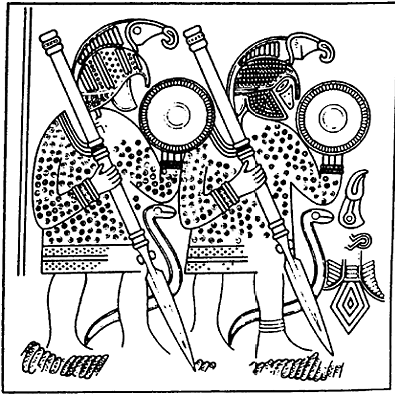
Valsgärde 7 warriors with spears
© 2004 M. P. Speidel
 Attachment: 60.24 KB Attachment: 60.24 KB
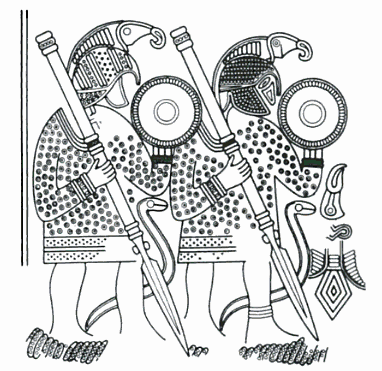
Valsgärde 7 warriors with spears (Hauk)
© 1982 Walter de Gruyter & Co.
 Attachment: 18.3 KB Attachment: 18.3 KB
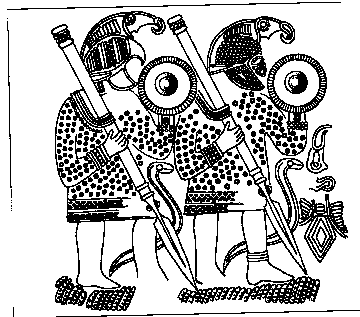
Valsgärde 7 warriors with spears
© 2007 I. P. Stephenson
"In addition to being efficient, all pole arms were quite nice to look at." - Cherney Berg, A hideous history of weapons, Collier 1963.
|
|
   |
 |
Matt Corbin

|
 Posted: Sat 07 Aug, 2010 8:25 am Post subject: Posted: Sat 07 Aug, 2010 8:25 am Post subject: |
 |
|
Timo,
Coincidentally I was just looking through "Anglo-Saxon Weapons & Warfare" by Richard Underwood. On page 80 there is a diagram which is unfortunately only described as "Helmet plates from Vendel, Sweeden". The diagram shows two warriors holding spears. This is a different diagram than the ones you posted. In the diagram, the spears clearly have a strap attached to the shaft. One of them appears to have a ring of some type around the shaft as well. The spear heads appear to be very similar to the ones you posted, though without the tapering. In the caption Underwood writes "Their spears are bound with piece of fabric, possibly marking the balance point".
Unfortunately I don't have access to a scanner so I can't post a picture. The book is still available through Amazon however:
Anglo-Saxon Weapons & Warfare
Hopefully this can be of some help.
-Matt
“This was the age of heroes, some legendary, some historical . . . the misty borderland of history where fact and legend mingle.”
- R. Ewart Oakeshott
|
|
  |
 |
Matt Corbin

|
 Posted: Sat 07 Aug, 2010 8:46 am Post subject: Posted: Sat 07 Aug, 2010 8:46 am Post subject: |
 |
|
A web search also turned up this version of the plates you already posted. Based on the caption it appears to be from Ardwisson.
The picture was found at http://www.archeurope.com/index.php?page=vendel-helmets-page-2
 Attachment: 153.41 KB Attachment: 153.41 KB
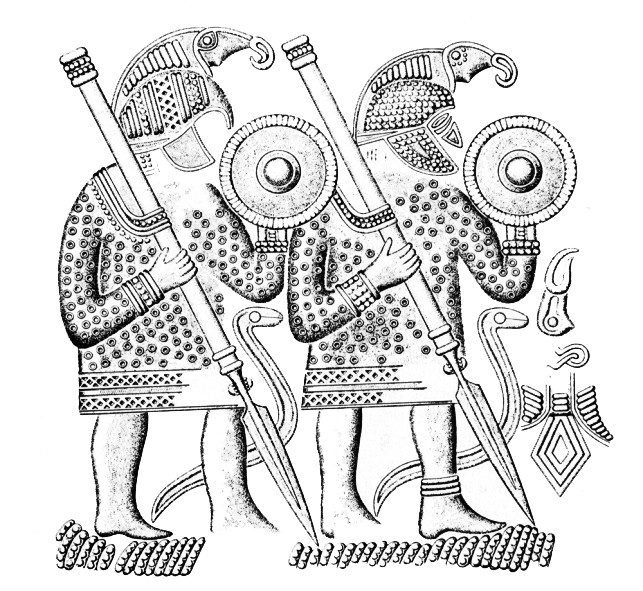
“This was the age of heroes, some legendary, some historical . . . the misty borderland of history where fact and legend mingle.”
- R. Ewart Oakeshott
|
|
  |
 |
|
K J Seago
|
 Posted: Sat 07 Aug, 2010 12:38 pm Post subject: Posted: Sat 07 Aug, 2010 12:38 pm Post subject: |
 |
|
could the lugs or wings on the spear be decorative rivet ends? considering the overall decoration of the people everything could well be over ornamented to emphasise decoration and style.
just another student of an interesting subject, 
|
|
  |
 |
|
Peter Johnsson
Industry Professional
|
 Posted: Sat 07 Aug, 2010 2:24 pm Post subject: Posted: Sat 07 Aug, 2010 2:24 pm Post subject: |
 |
|
There are some finds of the type of spear head showed on these helmet plates.
The little bulbous things are crouching animals. I have seen bears (when prowling around in store rooms), but they may be other animals represented in finds as well. I don´t know.
I am of the opinion that the strap is a loop to help in throwing. Several spear shafts in Danish bog finds have tacks to secure such loops or even the loops themselves remaining. These spear shafts are one or two centuries earlier, but I think it is pretty safe to bet it is what is depicted in these images.
Below I attach a drawing of a find from Vendel grave XII:
 Attachment: 106.95 KB Attachment: 106.95 KB
[ Download ]
|
|
   |
 |
David Huggins

|
 Posted: Sat 07 Aug, 2010 2:31 pm Post subject: Vendel Posted: Sat 07 Aug, 2010 2:31 pm Post subject: Vendel |
 |
|
They are very likely to be ornamented rivet heads rather then lugs or 'wings'. There are a number of examples including a pair of fantastic bears on a spear head socket from Vendel mound 12. I can not think of any 'winged' spear heads amongst the Uppland graves, although they are known on the Continent during this period. If anyone knows of any winged spears from pre-viking age Sweden I'd be very interested
Dave
and he who stands and sheds blood with us, shall be as a brother.
|
|
   |
 |
Patrik Erik Lars Lindblom

|
 Posted: Sat 07 Aug, 2010 2:59 pm Post subject: Posted: Sat 07 Aug, 2010 2:59 pm Post subject: |
 |
|
 I have saved some pics of that spear Peter shows, lets see if it works now to I have saved some pics of that spear Peter shows, lets see if it works now to 
seems work well, some can be copys of other pictures whit just a other angle 
more will come!
 Attachment: 58.86 KB Attachment: 58.86 KB
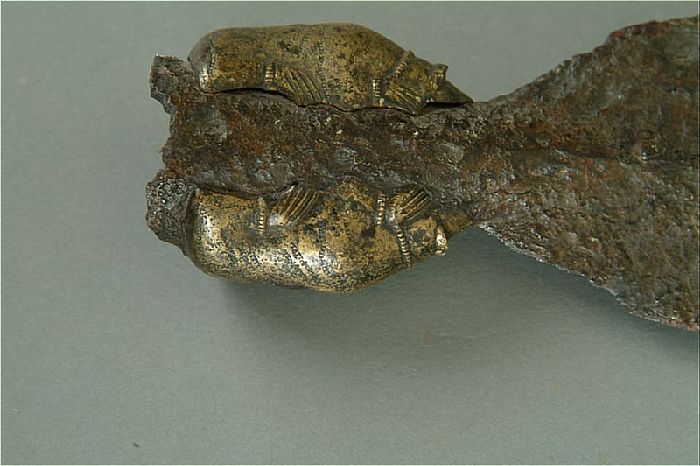
 Attachment: 45.46 KB Attachment: 45.46 KB
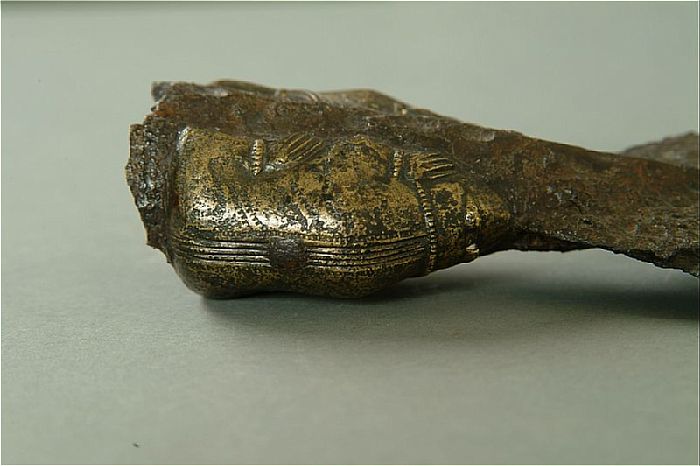
 Attachment: 49.44 KB Attachment: 49.44 KB
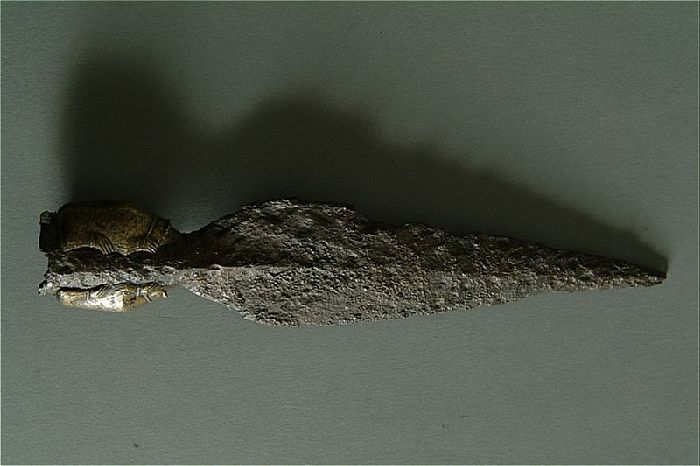
 Attachment: 66.29 KB Attachment: 66.29 KB
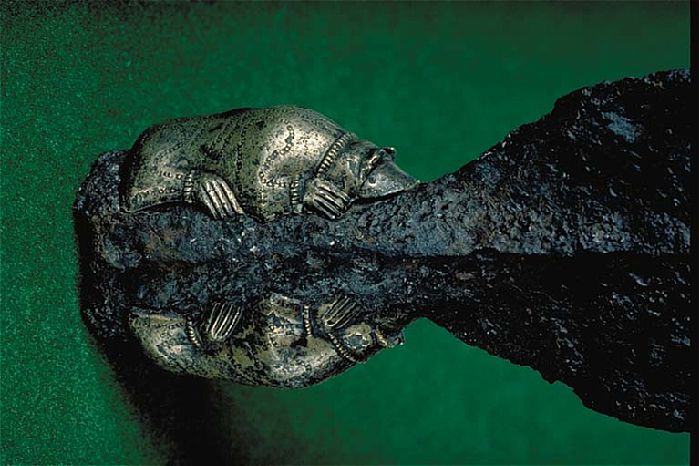
 Attachment: 29.76 KB Attachment: 29.76 KB

 Attachment: 21.38 KB Attachment: 21.38 KB

 Attachment: 19.18 KB Attachment: 19.18 KB
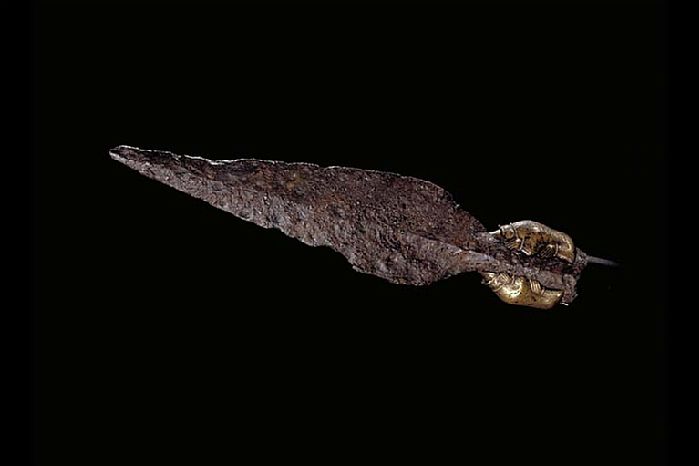
 Attachment: 16.42 KB Attachment: 16.42 KB
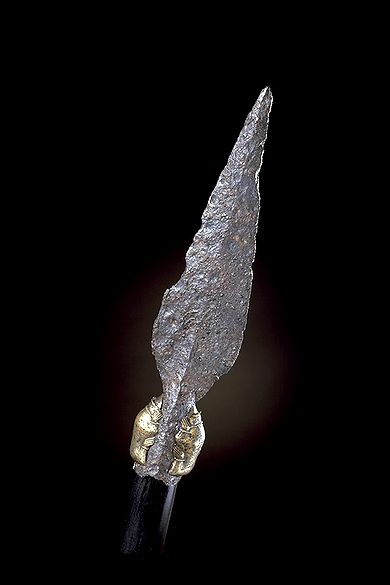
Frid o Fröjd!
Patrik
|
|
  |
 |
Patrik Erik Lars Lindblom

|
 Posted: Sat 07 Aug, 2010 3:06 pm Post subject: Posted: Sat 07 Aug, 2010 3:06 pm Post subject: |
 |
|
part 2 of that spear, and some yada yada so i can post them to 
that was all i have about that one, enjoy!
 Attachment: 12.97 KB Attachment: 12.97 KB

 Attachment: 25.35 KB Attachment: 25.35 KB
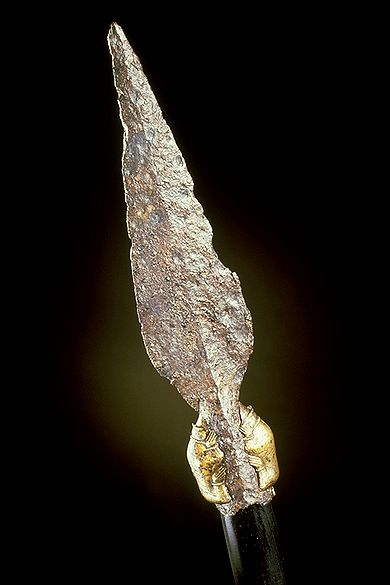
 Attachment: 19.18 KB Attachment: 19.18 KB
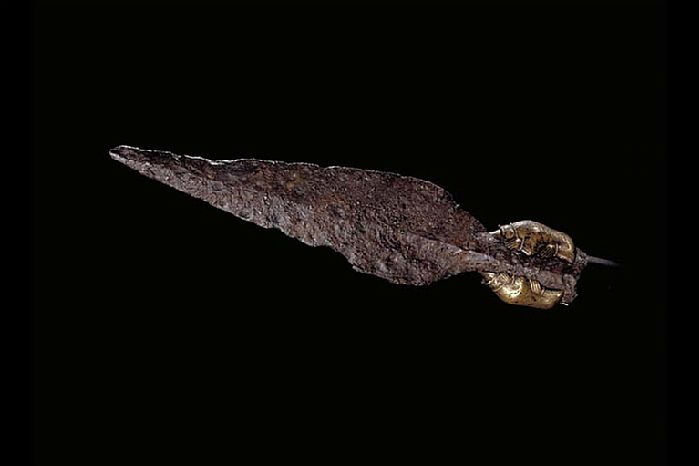
Frid o Fröjd!
Patrik
|
|
  |
 |
|
K J Seago
|
 Posted: Sat 07 Aug, 2010 6:42 pm Post subject: Posted: Sat 07 Aug, 2010 6:42 pm Post subject: |
 |
|
very interesting, i have never seen this, any idea if it is in the waylands work book? i have been considering purchasing it, the last of the armoured warrior pictures does look like it could well be those very decorative washers but wether that is somebody subconsciously changing the image or if it is a very well and clear copy is currently beyond my ken!
just another student of an interesting subject, 
|
|
  |
 |
David Huggins

|
 Posted: Sun 08 Aug, 2010 12:04 am Post subject: Vendel spears Posted: Sun 08 Aug, 2010 12:04 am Post subject: Vendel spears |
 |
|
Hi,
There is a line drawing of the spear head by Lindsey Kerr, included in ' Wayland's Work; Anglo-Saxon Art, Myth & Material Culture from the 4th to the 7th Century' a book that I would highly recommend to those with an interest in these aspects, and is very likely to be THE book on the subject for the next twenty five years.
I must say the book is not just about Early Anglo-Saxon culture though and draws upon and discusses comparative Scandinavian and Continental germanic cultures as well
Paul Mortimer's forthcoming book also includes a discussion on the these spears with an interesting observation on the
ties and rings discussed in this thread.
best
Dave
and he who stands and sheds blood with us, shall be as a brother.
|
|
   |
 |
|
Timo Nieminen
|
 Posted: Sun 08 Aug, 2010 2:13 am Post subject: Posted: Sun 08 Aug, 2010 2:13 am Post subject: |
 |
|
Thanks for the info and pics.
Spear-bears! (I might have said spear-moles without bears being mentioned.)
Wayland's Work looks like a very nice book.
Matt, Stephenson's drawing follows the one you posted closely. I don't know what to make of the ones in Underwood; the "straps" stick up by themselves - must be quite stiff.
"In addition to being efficient, all pole arms were quite nice to look at." - Cherney Berg, A hideous history of weapons, Collier 1963.
|
|
   |
 |
Patrik Erik Lars Lindblom

|
 Posted: Sun 08 Aug, 2010 7:20 am Post subject: Posted: Sun 08 Aug, 2010 7:20 am Post subject: |
 |
|
| Timo Nieminen wrote: | Thanks for the info and pics.
Spear-bears! (I might have said spear-moles without bears being mentioned.) |
I just give those pics a name, Mole/Mullvad can it be to, strange animal who diging around underground
and make small hills/högar and still mess around with ouer farmers.
| Timo Nieminen wrote: |
Matt, Stephenson's drawing follows the one you posted closely. I don't know what to make of the ones in Underwood; the "straps" stick up by themselves - must be quite stiff. |
Thanks to Matt, that pic gives some new light on those spears, i belived that was a part of the shirt first,
make an big U of lether and fold it around the pole and sew them together and they are stiff. 
Frid o Fröjd!
Patrik
|
|
  |
 |
|
Peter Johnsson
Industry Professional
|
 Posted: Sun 08 Aug, 2010 8:23 am Post subject: Posted: Sun 08 Aug, 2010 8:23 am Post subject: |
 |
|
| Patrik Erik Lars Lindblom wrote: |
I just give those pics a name, Mole/Mullvad can it be to, strange animal who diging around underground
and make small hills/högar and still mess around with ouer farmers.
|
Yes, the fierce moles are traditionally great inspiration for the warriors of the north! 
Moles are more or less blind, dig holes in the ground and eat worms. Sounds just like the thing any proud warrior would want to strive for.
Come think about it, that is exactly what the dead heros did in Valhall, day out and day in: scrape tunnels through the ground eating worms?
And you´ve heard about the Midgårds Worm, haven´t you? The Nemesis of all Moles.
 
-Sorry, I could not resist

Last edited by Peter Johnsson on Sun 08 Aug, 2010 9:08 am; edited 1 time in total
|
|
   |
 |
|
Peter Johnsson
Industry Professional
|
 Posted: Sun 08 Aug, 2010 9:05 am Post subject: Posted: Sun 08 Aug, 2010 9:05 am Post subject: |
 |
|
I happened to visit the museum in Gamla Upsala (a power center and place of worship for the old gods) where some of the finds from Vendel and Valsgärde are exhibited.
I saw a spear head I did not remember from previous visits and shot some quick photos with my phone. Bad quality, but you get the idea I think.
This is another take on the same theme that could well be what is intended in those ancient warrior images.
 Attachment: 105.83 KB Attachment: 105.83 KB
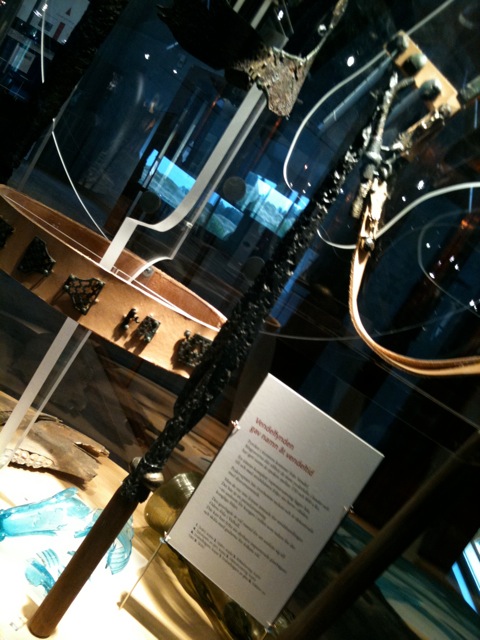
 Attachment: 84.87 KB Attachment: 84.87 KB
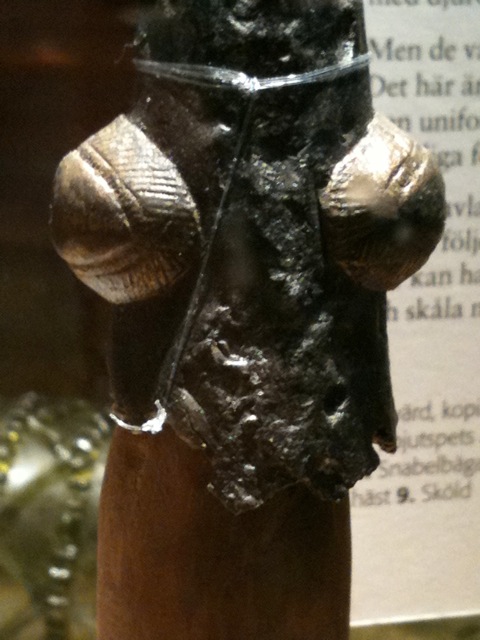
 Attachment: 72.11 KB Attachment: 72.11 KB
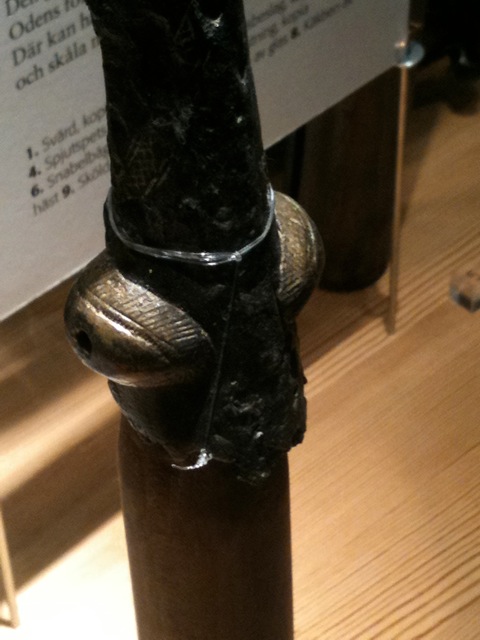
|
|
   |
 |
David Huggins

|
 Posted: Sun 08 Aug, 2010 11:38 am Post subject: Vendel spears Posted: Sun 08 Aug, 2010 11:38 am Post subject: Vendel spears |
 |
|
Hi Peter,
Hey sorry for jumping in on your own reply..we must have been typing a repl about the ornamented rivet heads at the same time!
I would agree with your opinion on the ties on the shaft too, I'd often thought the same thing, and remember as a young boy this been one of various methods we would employ to shoot bamboo cane javalins at a greater distance...not at moles though 
best
Dave
ps; nice capture of the inlay decoration on the socket in the lower photo that you posted.
and he who stands and sheds blood with us, shall be as a brother.
|
|
   |
 |
Matt Corbin

|
 Posted: Sun 08 Aug, 2010 11:48 am Post subject: Re: Vendel spears Posted: Sun 08 Aug, 2010 11:48 am Post subject: Re: Vendel spears |
 |
|
| David Huggins wrote: |
Paul Mortimer's forthcoming book also includes a discussion on the these spears with an interesting observation on the
ties and rings discussed in this thread.
|
A bit off topic I know, but does anyone know when Paul's book will finally be released?
“This was the age of heroes, some legendary, some historical . . . the misty borderland of history where fact and legend mingle.”
- R. Ewart Oakeshott
|
|
  |
 |
|
Peter Johnsson
Industry Professional
|
 Posted: Sun 08 Aug, 2010 12:36 pm Post subject: Posted: Sun 08 Aug, 2010 12:36 pm Post subject: |
 |
|
Hi David,
You know, I did not even notice the silver inlay until you pointed it out! 
It was dark in those show cases with the typical minimal light picking out some details.
You guys who have looked more careful and dedicated at the weapons of this time period, do you know if these types of spears are wide spread or if they may be a local scandinavian (swedish?) thing. I mean these embellished and exaggerated rivet washer sculptures, be it domes or bears.
I can´t remember seeing them in continental or british museums, but then again there is much yet to see.
Best
Peter
|
|
   |
 |
David Huggins

|
 Posted: Sun 08 Aug, 2010 2:20 pm Post subject: Vendel spears Posted: Sun 08 Aug, 2010 2:20 pm Post subject: Vendel spears |
 |
|
Hi Peter
As far as I can recall I am not familiar with any Anglo-Saxon or Merovingian examples of a similar appearance and I have always considered them a regional phenomena of the period.
But like you say there are many museums housing untold spear heads in store rooms so who can say for sure but perhaps curiously if we look at the pressbleche from the Vendel and Valsgarde burials where these decorative heads appear on the various panels, and then look at the mounted warrior pressbleche panel from the Sutton Hoo helm, this warrior also carries a spear with the same decorated rivet heads, although the spears held by the 'dancing warriors' in another series of panels do not show the same decorative element.
Wether this mounted warrior image is a true reflection of a type of Early Anglo-Saxon decorated spear or reflects more about the cultural links of the Anglian kingdoms with Scandinavia is perhaps more likely given the absence of spear heads with such decorated rivets from the early english kingdoms.
Some Early Anglo-Saxon spear sockets are known to have been decorated with guilded chip carved mounting rings as opposed to the decorated rivets from Sweden.
best
Dave
and he who stands and sheds blood with us, shall be as a brother.
|
|
   |
 |
|
Peter Johnsson
Industry Professional
|
 Posted: Sun 08 Aug, 2010 4:00 pm Post subject: Posted: Sun 08 Aug, 2010 4:00 pm Post subject: |
 |
|
Thanks Dave!
I was hoping to hear that as you may have guessed 
A small but perhaps pretty important detail.
In sweden we are careful about not making too much out of these finds. They tend to be regarded as imports or their origin is not really touched upon, their significance and magnitude perhaps not fully realized. Much of the finds are out of sight in store rooms gathering dust and crumbling into rust. I am not sure what the current idea is.
If it is possible to find clues these objects might indeed be locally made, this raises a number of very interesting questions.
When visiting museums we are told about the manufacture of glass beads, casting of brooches and weaving of cloth. This was also of importance of course, but it leaves much to be said about the level of skill and scale of organization.
Metal craft of this magnitude is something else.
A large body of high quality craft like this, that spans generations, will not come out of nothing. There has to be a rather special social structure for something like this to be made possible. Those in power knew how to effectively organize local resources (military, economically, politically on an international scale) and to top it of they invested in manufacture of incredible craft.
Today the mounds stand forlorn in a landscape that is outside current economic (and academic?) importance.
1400 years ago things were very different...
|
|
   |
 |
Patrik Erik Lars Lindblom

|
|
  |
 |
|
|

